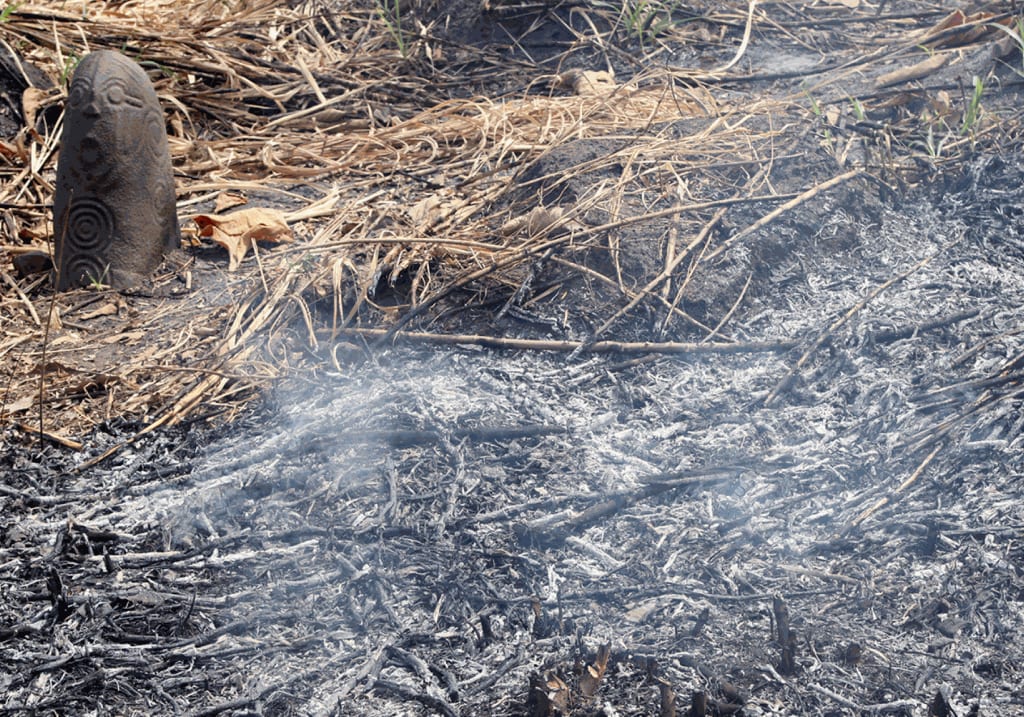
Not much African art is left in Africa. Unfortunately, the few objects still in their original environment are often not preserved in the best conditions. Earlier this year, Dr. Ivor Miller and Dr. Abu Edet (both at the Department of History and International Studies, University of Calabar, Cross River State, Nigeria) reported about the precarious state of most of the circa 450 ancient stone monoliths (known as akwanshi) still remaining in Nigeria’s Cross River State.
During an expedition to the region in January, Miller and Edet discovered that most of the monoliths are in critical danger of total destruction, either by fire damage caused by local communities or by theft. You can find more details and pictures in their article Cross River Monoliths: in critical danger of total destruction (available here).
Especially fires started by farmers cultivating cash crops, using slash and burn methods, cause a lot of irreparable damage. At the Edamkono site, Miller and Edet witnessed the absolute destruction of the monoliths. Although all of them once were standing upright, most had fallen. One was lying along the road, partially buried in the ground and cars were driving over it! Others were completely cracked from fire damage, as can be seen below.

In March 2015, Miller and Edet inspected several other monolith sites in Nta, Nselle, and Nde areas of Ikom L.G.A. While there remained some carved monoliths in their original locations, the majority of monoliths were broken at the base with their tops missing, suggesting fire damage and theft for commercial sale. Click here to see some dramatic pictures.

After Philip Allison’s pioneering documentation of the carved monoliths of the middle Cross River region in the 1960s, selected monolith sites were declared as National Monuments under the Nigerian Department of Antiquities. Clearly, the National Commission for Museums and Monuments of Nigeria, which is currently responsible for the preservation of the monolith sites, has not been able to cope with this crisis. Therefore Miller and Edet hope to appeal to the international community for assistance for better documentation, preservation and conservation of these sites. Let’s hope the right people get to read their reports.
For now, only individuals (such as Margaret Agbor Ella) or local communities are making an effort to preserve these ancient monoliths; read more about it in Cross River monoliths: community efforts to salvage their heritage (available here). As Ella stated the most important tool for preservation of the monoliths is to educate the local communities, especially the youths. This is because Nigerian pastors in local churches, particularly Pentecostal, have played a destructive role by dissuading the people from appreciating and preserving their heritage, by labeling the monoliths and any form of traditional culture as ‘witchcraft’ and ‘sinful’.
UPDATE: a reader informed me that the top of the Ntetakor monolith (illustrated above) is currently held by the Metropolitan Museum of Art in New York. It was a bequest from the collection of Nina and Gordon Bunshaft, who had acquired it from Fatou Touba M’Backe Gallery (New York) in 1985.
